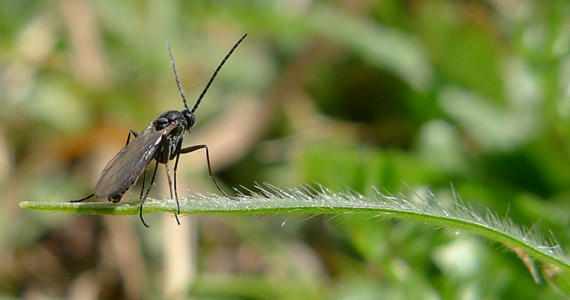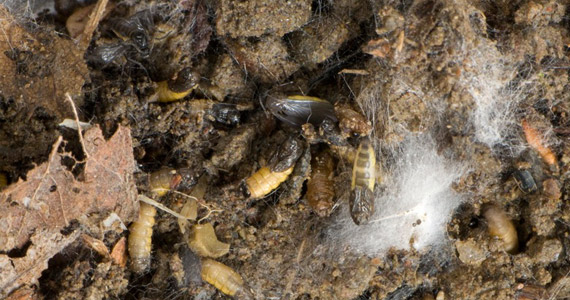Fungus mosquito - Pests and Diseases

Briefly about the plague
- What are fungus gnats?
- The fungus gnat (families Mycetophilidae and sciaridae ) is a common pest that affects indoor plants, mainly in areas with high humidity.
- What is there to see?
- They are usually first noticed when innocent adults fly around the houseplants or gather in a nearby window.
- What can be done about it?
- Make sure the air above the soil circulates and water your plants well.
Symptoms of the plague
Symptoms of plants that indicate fungus gnat is present include sudden wilting, loss of vigor, poor growth and yellowing of the leaves. In severe infections, a significant portion of the plants may be lost.
How to avoid the plague?
- Inspect plants for signs of insect infestations prior to purchase. Gently loosen the soil near the stem and look for shiny, clear larvae. Refuse any plant that shows signs of mosquitoes.
- Do not over water, especially in the winter months when the plant does not need much water. Fungus gnats do well in moist soils. When potting, do not use organic material that retains water, such as algae, which can encourage egg laying.

Solutions to get the plague under control
- If there are any infestations, allow the soil to dry to a depth of about 1 to 2 inches (2.5 to 5 cm) between waterings. This not only kills the larvae and inhibits the development of the eggs, it also makes the soil less attractive to the egg-laying females.
- Use yellow sticky traps placed horizontally on the soil surface to capture large numbers of egg-laying adults. The mosquitoes are attracted to yellow and can easily be removed from the trap before they can lay more eggs.
- Use a covering top layer of beneficial nematodes to destroy the larval stage. Nematodes are microscopic roundworms that enter the fungus gnat larva and then release bacteria that consume the pest from within. Nematodes also work against harmful lawn and garden larvae, fleas and other soil-born pests (they do not harm earthworms). The long-lived nematodes are safe for use on pets, plants and your family.
Biological cycle of fungus gnats
Adult mosquitoes live about a week and lay up to 300 eggs in rich, moist soils. Within four to six days, tiny larvae emerge and begin feeding on plant roots during their two-week life. The pupal stage lasts three to four days before young adults emerge from the soil and begin the next generation. The entire life cycle from egg to adult can be completed in just three to four weeks, depending on the temperature. Due to their propensity and relatively short gestation, potted plants can host any stage – egg, larva, pupa, adult – with several generations at once.



